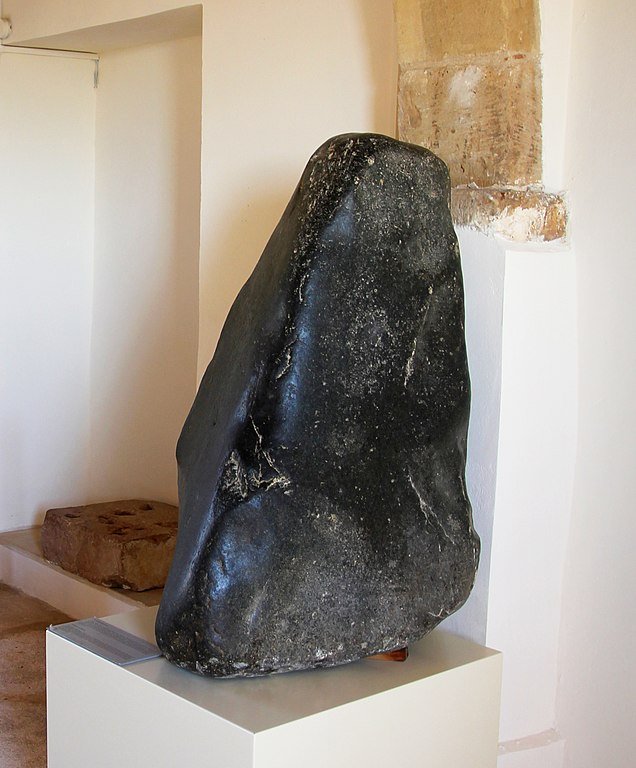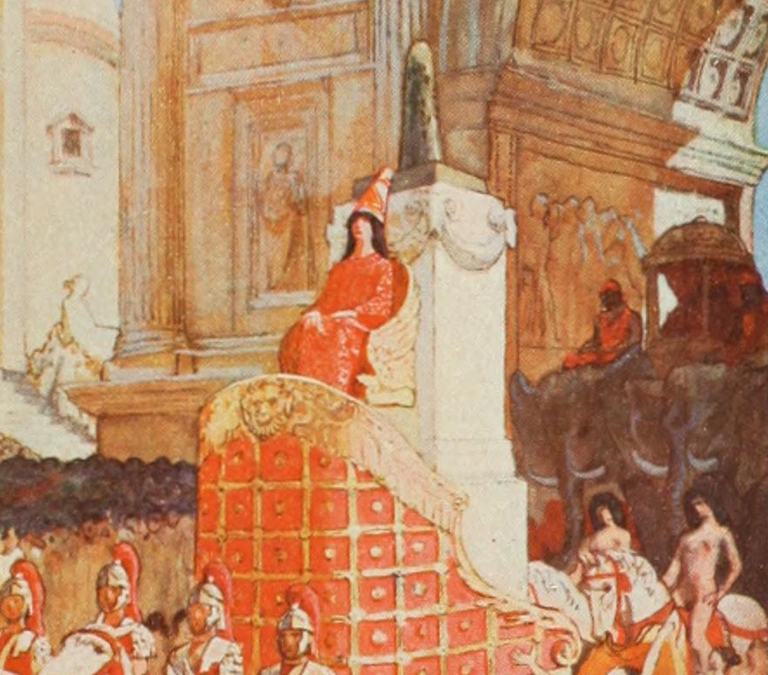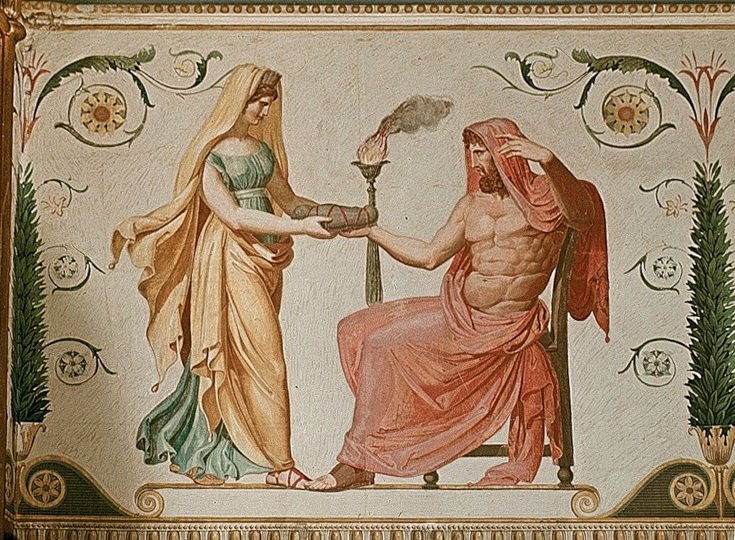Triangular or Cone Shaped Images, or a Simulacrum of a God/Goddess in Temple Worship:

Meteoritic Stone of Heliogabalus, seen in this drawing: The Temple of Mithras, Heliogabalus and Elsinoe by Maria Artwińska (~1912). Based on a scene from "Irydion" by Zygmunt Krasiński.

Another image of the stone worshipped by Varius, aka Heliogabalus.

Zeus' Thunderbolts correspond to Fireballs or Bolides, some of which are recovered as Meteorites.
Pottery (clay) showing symbol of the fireball, aka the Thunderbolts of Zeus:

Head of Athena with Corinthian helmet. Reverse shows a Thunderbolt of Zeus. Inscription (Greek): ΑΓΑΘΟΚΛΕ ΒΑΣΙΛΕΟ:
More Thunderbolts:

Symbol of the Thunderbolt from Ancient Elis, Greece (pre) 471 BCE. Perhaps the origin of the Fleur-de-lis, The Flower of Elis?

Curiously, being more abstract, split the above Thunderbolt apart and common symbols reveal themselves: that of Hathor and the Bee.
(Omega Symbol of Ninhursag = Symbol of Hathor)
The sella curulis or Roman curule chair was a chair of special significance. For anything to be seen upon it would indicate that it was regarded in high esteem.
A bit speculative, but it seems plausible: Are some of these coins (see link below) depicting a stone upon a curule?
Based on the dates, and considering also how they show the image of Cybele (Magna Mater), it would appear to depict the meteoritic stone of Cybele placed upon a curule. (As Falconet explains, this stone was small and could be held in the hands.)
Many similar examples can be seen here: https://www.coinarchives.com/a/results.php?search=curul
Comets too can be seen depicted on coins:

"When Zeus was born, however, Rhea hid him in Crete and tricked Cronus into swallowing a stone instead." Britannica: Cronos.
Cronos and Rhea by Karl Friedrich Schinkel, Rhea in this picture holds a meteorite, the stone disguised as a wrapped-up baby:

The inspiration of Schinkel's drawing (and the one on the cover of von Dalberg's book) originates from a stone monument, seen here: https://arachne.dainst.org/entity/1250193



Conical Image of the Goddess (Meteorite?) shown at the Temple of Baalat Gebal ("Lady of Byblos").
Botton coin: "Macrinus coin from Byblos (Obverse showing Emperor Macrinus and reverse showing the Temple of Baalat Gebal including the temple court and cultic object inside a sacred horned enclosure)" from "Catalogue of the Greek coins in the British Museum" by George Francis Hill (1910) p. 571, Public domain, via Wikimedia Commons
Plate 27: coins 10 and 11 from "Les perses achéménides, les satrapes et les dynastes tributaires de leur empire Cypre et Phénicie" by Ernest Babelon (1893).
Just like Aphrodite at Paphos.
HTTP is in use instead of HTTPS and no protocol redirection is in place. Do not enter sensitive information in this website as your data won't be encrypted.
Read about HTTP unsafety: [https://whynohttps.com](1) [https://web.dev/why-https-matters](2)
_ Vote for our WITNESS to support this FREE service!
Congratulations @solar-anamnesis! You have completed the following achievement on the Hive blockchain And have been rewarded with New badge(s)
Your next target is to reach 6000 upvotes.
You can view your badges on your board and compare yourself to others in the Ranking
If you no longer want to receive notifications, reply to this comment with the word
STOP